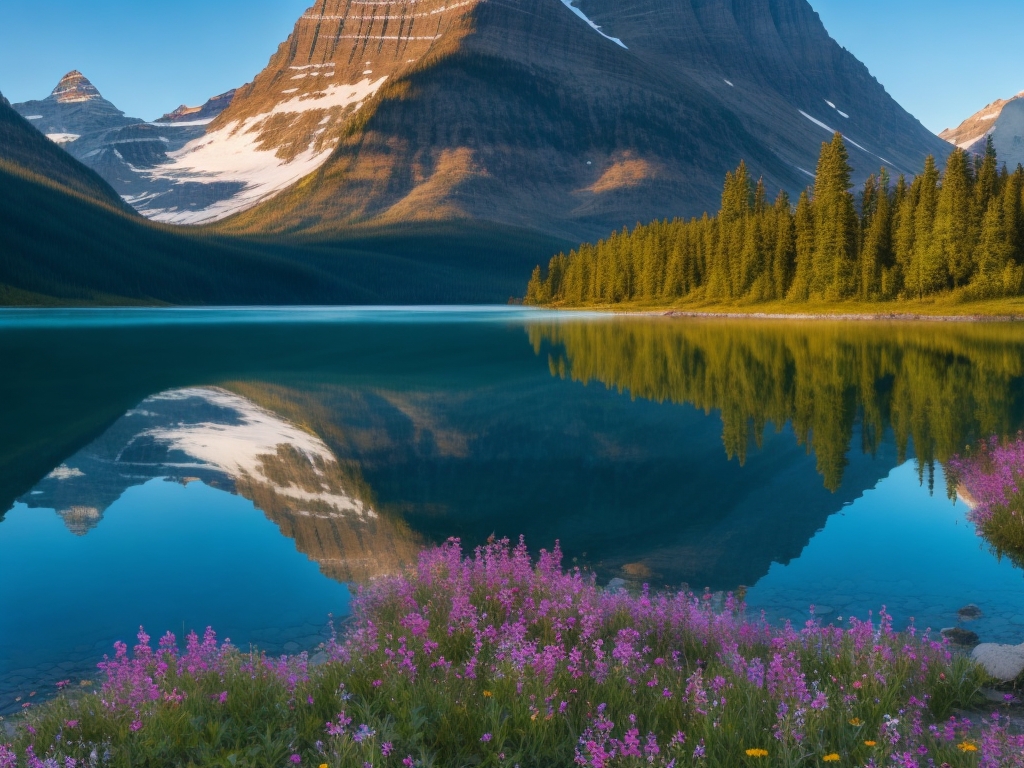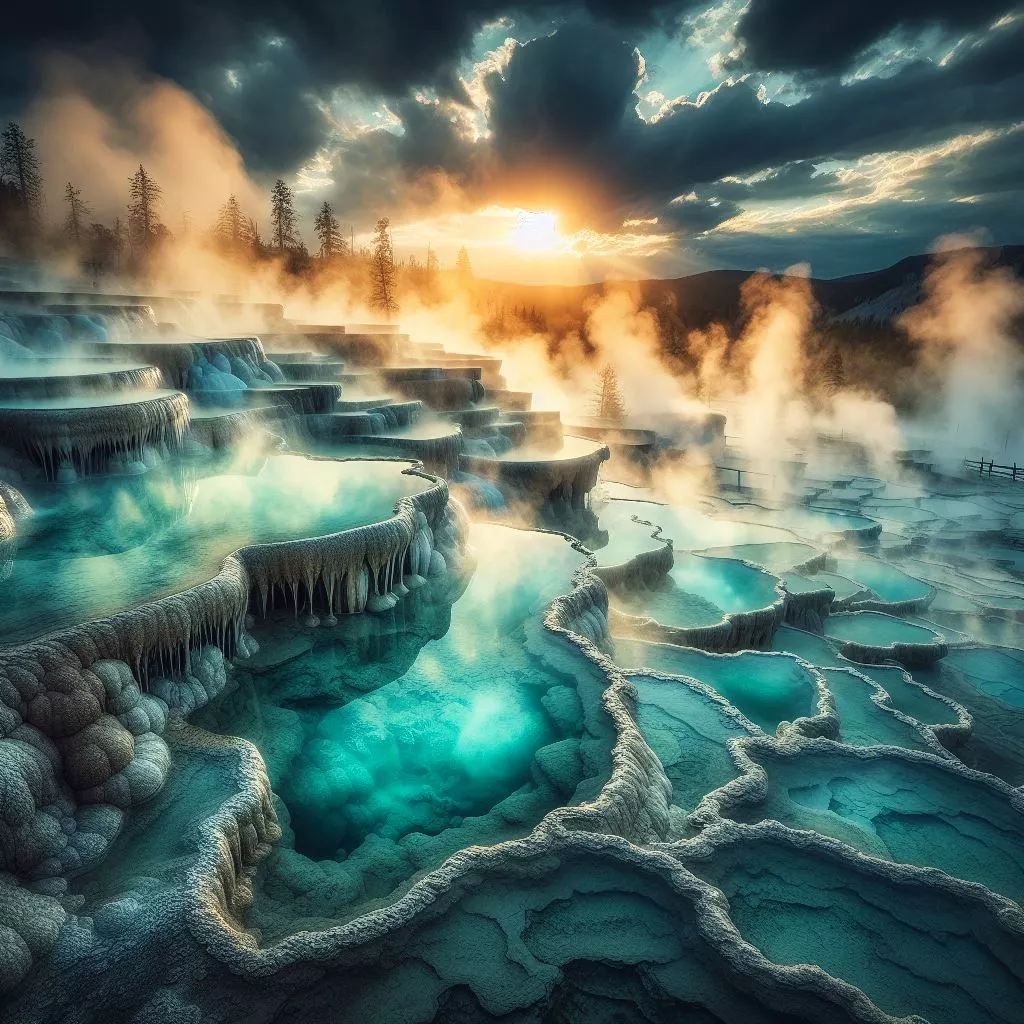Are you ready for an adventure? Get ready to explore the fascinating world of the mountain region!
From the majestic peaks to the unique flora and fauna, there are so many fun facts waiting to be discovered. Did you know that some of the highest mountains in the world can be found here? And let’s not forget about the role these mountains play in ecosystems.
So come along and join us on this journey as we uncover all the amazing things that make the mountain region truly special.
Key Takeaways
- The mountain region offers adrenaline-pumping adventures for all skill levels, providing opportunities for outdoor recreation and cultural immersion.
- Indigenous cultures in the mountain region have a deep connection to nature and spirituality, showcasing vibrant traditions, rich heritage, and preserving customs through generations.
- Mountain folklore in the region explores enchanting tales of mystical creatures and mythical beings, transporting readers to a world filled with wonder and magic.
- The mountain region is a place of legends and enchanting stories, unveiling ancient narratives of mountain legends and creating a sense of wonder and magic in mountain folklore.
Majestic Peaks and Stunning Landscapes
You’ll be in awe of the majestic peaks and stunning landscapes found in the mountain region. Capture breathtaking moments through mountain photography, showcasing the beauty of nature at its finest.
However, these picturesque scenes come with challenges. The mountainous terrain tests your endurance and determination, pushing you to overcome obstacles and reach new heights.
As we delve deeper into this topic, let’s explore the highest mountains in the world and their remarkable features.
The Highest Mountains in the World
If you’re an avid hiker, you might be interested to know that the highest mountains in the world are found in the mountain region. Here are some fun facts about these majestic peaks and their extreme altitudes:
- Mount Everest, standing at 29,029 feet, is the tallest mountain on Earth.
- K2, also known as ‘Savage Mountain,’ is the second-highest peak at 28,251 feet.
- Kangchenjunga is the third-highest mountain and has an elevation of 28,169 feet.
- The fourth-highest peak is Lhotse with a height of 27,940 feet.
Now let’s delve into the unique flora and fauna that thrive in this remarkable ecosystem.
Unique Flora and Fauna
Now let’s explore the fascinating plant and animal life that thrives in this extraordinary ecosystem.
The mountain region is home to a diverse range of unique plant species, adapted to survive in harsh conditions. From colorful alpine flowers to ancient bristlecone pines, there is a treasure trove of botanical wonders waiting to be discovered.
And it’s not just plants – rare animal species like the snow leopard and Himalayan tahr roam these rugged landscapes.
Speaking of ecosystems, mountains play a crucial role in maintaining biodiversity and regulating climate patterns. So, let’s delve deeper into their significance without delay!
The Role of Mountains in Ecosystems
Exploring the unique flora and fauna of this extraordinary ecosystem, you’ll discover the crucial role mountains play in maintaining biodiversity and regulating climate patterns.
Mountains act as natural barriers that capture moisture from the atmosphere, releasing it as rain or snow, thus playing a vital role in the water cycle.
Additionally, their diverse landscapes provide habitats for a wide range of species, contributing to high levels of biodiversity.
Now let’s delve into the fascinating formation and geological processes that shape these majestic mountains.
Formation and Geological Processes
The formation and geological processes of mountains shape their majestic landscapes. These natural wonders evoke a sense of awe and wonder in those who witness their grandeur.
Imagine standing atop a towering peak, surrounded by vast valleys and rugged cliffs, feeling a connection to the earth that is both humbling and empowering.
The forces of tectonic activity have sculpted these geological formations over millions of years, creating an environment that beckons adventurers to explore its challenges and rewards.
Now let’s delve into the world of mountain climbing and adventure sports.
Mountain Climbing and Adventure Sports
Imagine reaching the summit of a towering peak, feeling the exhilaration of conquering nature’s challenges and embracing the thrill of mountain climbing. Mountain biking and rock climbing are two popular adventure sports that allow you to experience the adrenaline rush in the mountain region.
Whether you’re navigating rugged trails on a bike or scaling vertical cliffs, these activities offer an exciting way to explore and challenge yourself in this awe-inspiring landscape.
Now let’s delve into the cultural significance of mountains…
Cultural Significance of Mountains
Mountains hold a deep cultural significance for many communities around the world. They are more than just natural formations; they are steeped in cultural traditions and spiritual significance. Imagine standing at the foot of a majestic mountain, surrounded by ancient rituals and customs that have been passed down through generations.
The mountains become a symbol of unity, strength, and resilience. These sacred peaks inspire awe and connect people to their ancestors, making them feel grounded and connected to something greater than themselves.
Now let’s explore the different mountainous regions around the globe…
Mountainous Regions Around the Globe
Now that you’ve learned about the cultural significance of mountains, let’s explore some mountainous regions around the globe.
Africa is home to breathtaking ranges like the Atlas Mountains in Morocco and the Rwenzori Mountains in Uganda.
In South America, you’ll find iconic peaks such as the Andes, stretching across multiple countries. These majestic landscapes not only offer stunning views but also provide unique habitats for diverse flora and fauna.
Speaking of habitats, let’s delve into mountain weather and climate next.
Mountain Weather and Climate
The weather in mountainous regions can be unpredictable and harsh, often changing rapidly. Mountain weather patterns are influenced by various factors, including altitude and proximity to oceans.
Climate change is also impacting mountains, leading to rising temperatures and altered precipitation patterns. These changes affect the delicate ecosystems found in these regions, with potential consequences for flora and fauna.
Understanding mountain weather and the impact of climate change is crucial in addressing threats to mountain environments.
Threats to Mountain Environments
To better understand the threats to mountain environments, you should consider the impact of deforestation and unsustainable land use practices. These activities have a significant human impact on the delicate balance of mountain ecosystems.
Here are some key points to consider:
- Deforestation leads to soil erosion and loss of habitat for wildlife.
- Unsustainable land use practices contribute to water pollution and degradation of natural resources.
- Human encroachment disrupts the fragile biodiversity found in mountains.
- Climate change exacerbates these issues, leading to more frequent natural disasters.
Understanding these challenges is crucial for preserving our precious mountain environments and ensuring their sustainability for future generations.
Mountain Conservation and Sustainability
If you want to contribute to mountain conservation and sustainability, you should actively participate in eco-friendly practices such as recycling and reducing your carbon footprint. Additionally, supporting initiatives like mountain reforestation can help restore fragile ecosystems. Sustainable mountain agriculture is another crucial aspect, promoting responsible land use and preserving biodiversity. By adopting these practices, you become an advocate for the preservation of mountains and their unique environments.
Now let’s explore some famous mountain ranges around the world.
Famous Mountain Ranges
One of the most well-known mountain ranges in the world is the Himalayas. These majestic peaks have captivated adventurers and nature enthusiasts for centuries.
Here are some fascinating facts about famous mountain ranges and their unique weather and climate:
- The Andes: Stretching over 7,000 kilometers, they are the longest mountain range on Earth.
- The Alps: Known for their breathtaking beauty, these mountains offer excellent skiing opportunities.
- The Rockies: Home to diverse wildlife, including grizzly bears and bighorn sheep.
- The Atlas Mountains: Located in North Africa, they provide a stunning backdrop to ancient cities like Marrakech.
- The Great Dividing Range: This Australian range stretches over 3,500 kilometers and influences the continent’s climate.
Now let’s explore how these awe-inspiring landscapes attract tourists seeking adventure and relaxation.
Mountain Tourism and Recreation
Looking for a thrilling getaway? Mountain tourism offers breathtaking landscapes and exciting recreational activities for you to enjoy.
Explore the vast network of mountain biking trails that wind through picturesque valleys and forests, providing an adrenaline-pumping adventure for all skill levels.
If skiing is more your style, head to one of the many alpine skiing resorts where you can carve down snowy slopes surrounded by stunning mountain views.
But mountain tourism isn’t just about outdoor recreation; it also provides an opportunity to learn about traditional practices and indigenous cultures.
Traditional Practices and Indigenous Cultures
Immerse yourself in the vibrant traditions and rich heritage of indigenous cultures as you discover the captivating practices that have been passed down through generations. Indigenous practices are deeply rooted in traditional cultures, showcasing their deep connection to nature and spirituality. These rituals often involve music, dance, storytelling, and ceremonies. They serve as a way for communities to maintain their identity and preserve their customs.
Now, let’s delve into the intriguing world of mountain folklore and legends.
Mountain Folklore and Legends
As you explore the enchanting tales of mountain folklore and legends, you’ll be captivated by the mystical creatures and mythical beings that inhabit these ancient narratives.
From the mischievous fairies hiding in the woods to the majestic dragons guarding hidden treasures, these folklore tales transport you to a world filled with wonder and magic.
Immerse yourself in these captivating stories and discover a sense of belonging in the rich tapestry of mountain mythology.
Frequently Asked Questions
How do mountains affect the global climate?
Mountainous weather patterns can have a significant impact on the global climate. The presence of mountains influences wind patterns, causing variations in temperature and precipitation. This affects agriculture by creating diverse microclimates that support different crops and ecosystems.
What are some traditional practices and customs of indigenous people living in mountainous regions?
Traditional practices and customs of indigenous people living in mountainous regions include rituals, ceremonies, and art forms that celebrate their connection to nature. These practices foster a sense of community and belonging among the indigenous communities.
Are there any famous mountains that are not part of a mountain range?
Famous solo mountains, such as Mount Everest and Mount Kilimanjaro, are not part of a mountain range. These unique mountain formations stand alone and attract adventurers from around the world.
How do mountains contribute to the preservation of biodiversity?
Mountains contribute to the preservation of biodiversity through their unique ecosystems. Mountain ecosystems support diverse plant and animal species, including endemic species found nowhere else. They provide habitats, act as water sources, and promote genetic diversity.
What are some threats to mountain environments and what can be done to address them?
To address threats to mountain environments, conservation efforts are crucial. This includes protecting biodiversity and ecosystems, promoting sustainable tourism practices, and raising awareness about the importance of preserving these fragile ecosystems for future generations.
Conclusion
In conclusion, the mountain region is a fascinating and awe-inspiring place. With its majestic peaks and stunning landscapes, it offers a unique experience for adventurers and nature lovers alike.
From the highest mountains in the world to the diverse flora and fauna that call these mountains home, there is so much to discover. Mountains play a vital role in ecosystems, shaping the land and providing essential resources.
Whether you’re exploring famous mountain ranges or immersing yourself in traditional practices and indigenous cultures, the mountain region has something for everyone to enjoy.
So pack your bags, embark on an adventure, and create memories that will last a lifetime.




